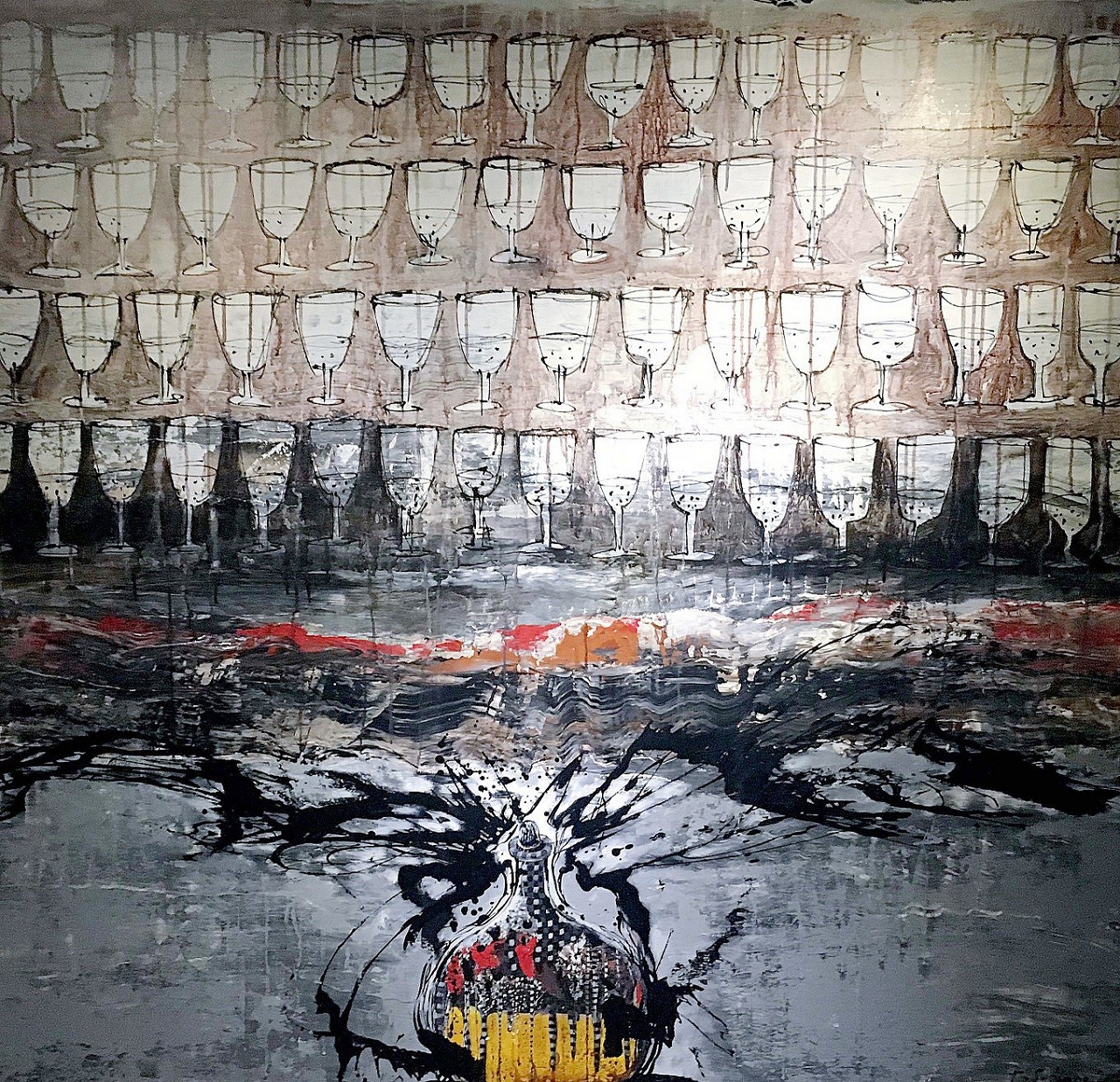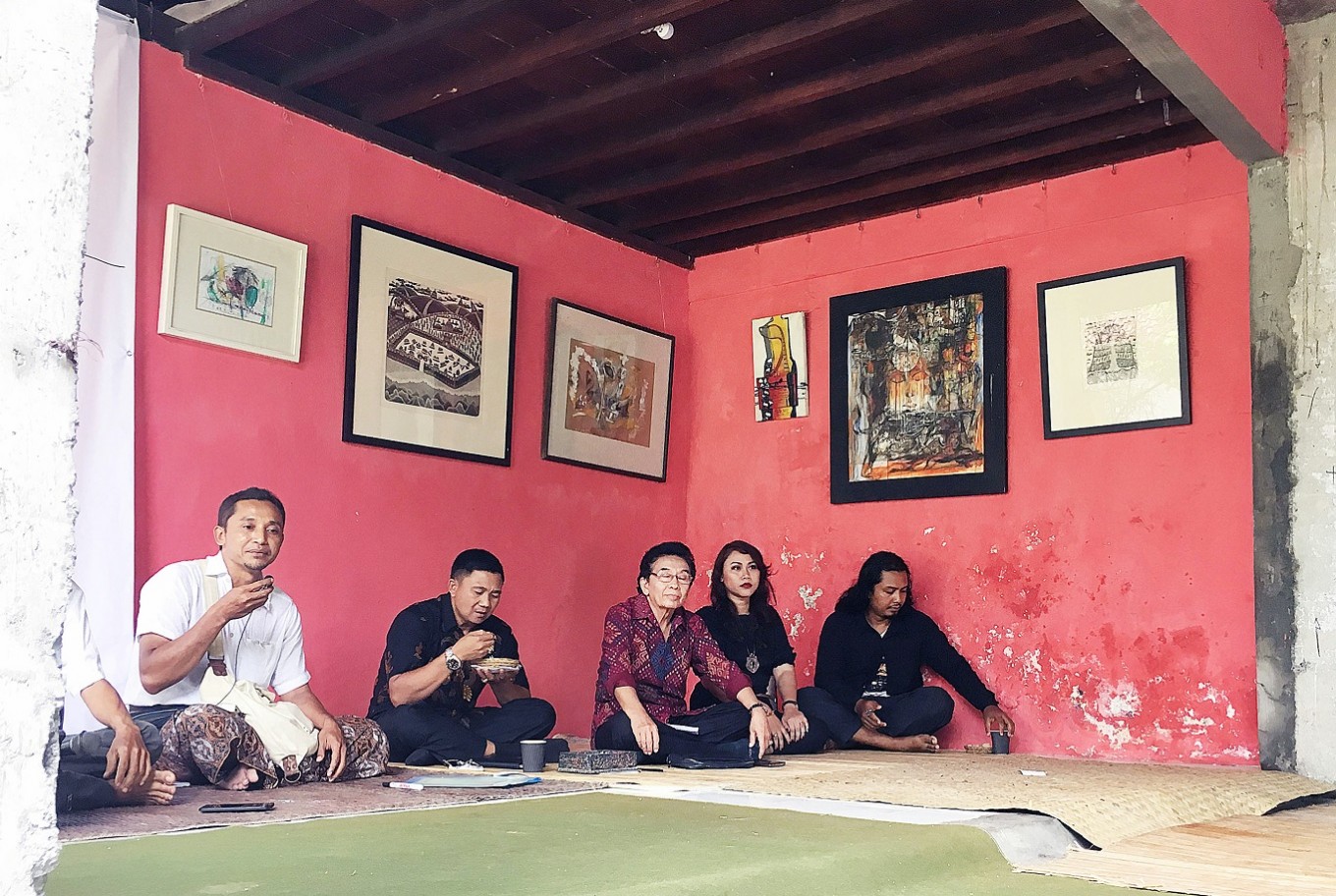On personal and collective intoxication
A painter priest delves into the joys brought by liquor and the dangers of intoxication.
Change Size
 Enjoy You Life (2016) (JP/I Wayan Juniarta)
Enjoy You Life (2016) (JP/I Wayan Juniarta)
I
n Bali, locally produced alcoholic beverages, ranging from the palm toddy tuak, the palm spirit arak and the sweet, sticky rice wine brem, are a permanent fixture in the daily lives of residents.
The liquors serve many roles, in both profane and sacred settings. They are the preferred rite-of-passage drinks for local youths trying to establish that important camaraderie with their peers; a leisurely beverage among adults’ evening congregations, where traded gossip ranges from political issues to village-level carnal infidelities; and a mandatory offering for the bhuta kala, a term encompassing the unseen creatures that roam the island’s roads, rivers and forests.
A regular sacrificial offering will pacify these creatures, turning them into dependable allies. Metabuh, the act of pouring into the ground a liberal amount of arak and brem, is an important part of this offering.
An ongoing exhibition at Bidadari Art Space in Mas village, Ubud, presents a visual interpretation of the roles of alcoholic beverages on the island. Titled “Tetabuhan”, the exhibit, which runs until Feb. 27, features the works of Putu “Bonuz” Sudiana, a full-time painter, dedicated temple priest and part-time poet.
Fellow literary man Wayan Westa penned an eloquent note for the displayed work, providing a connection between various meanings of the word tabuh, from musical sounds to words and later on the act of libation, to underline the importance of the ancient tradition of making offerings to maintain cosmic harmony.
“I love spending time with my musician friends, playing guitar and drinking tuak and arak. It was during one of these gatherings that the idea for this exhibition crossed my mind,” Bonuz said.
A native of Nusa Penida, an island southeast of Bali, Bonuz was educated at Denpasar’s Indonesian Fine Arts Institute (ISI) before participating in numerous group and solo exhibitions in his home country as well as in Singapore, Malaysia and Hong Kong. In 2015, he was inducted as a temple priest in his home village, serving pilgrims who visit the famous Giri Putri cave.
(Read also: Who is the mystery woman in Sukarno's painting?)

The new religious duty did not stop his passion for painting, or arak.
“I prefer arak because tuak always gives me a bad hangover,” he said.
The exhibition is a testament to those passions. Some of the works, including Because Life is Delicious, offer a narrative on liquor as a pleasurable personal pursuit, while others elevate alcohol into a poignant symbol of intoxication.
In these works, Bonuz is not narrating a physical intoxication of slurred words and blurred visions, but a more destructive one — the kind that results in a loss of self and kindness.
Upeti (Tribute), for instance, depicts a group of low-income people sitting submissively on the ground while offering bottles of bright-red liquor to a demonic individual with a long tongue and dressed in a shirt and tie.
(Read also: A Kiwi in the paddy)

Bonuz implicitly portrays how the permeating practice of offering bribes to powerful people has diluted the country’s political and economic system with so much “alcohol” that it has turned all people, especially politicians and bureaucrats, into a horde of manusa raksasa (demons) intoxicated by loba (greed) and angkara (lust). His status as a temple priest has not prevented him from using his brush to capture the “religious intoxication” that turns spiritual seekers into zealots, fanatics and radicals as proven in his work Looking for Holy Water. The title immediately brings to mind Churning of the Milky Ocean, a popular episode in Hindu mythology that narrates a bloody battle between gods and demons as the two sides compete for the possession of the elixir of immortality, Amerta.
In Bonuz’s world, the battle is about who has the right to declare that his or her truth is the ultimate one. Religious zealots and bigots are all in various states of “religious intoxication”, peddling their own versions of the truth as the valid one and labeling those who do not agree with them as infidels. It is only a matter of time before this competition turns into a bloody battle on par with that narrated in the Hindu myth.
(Read also: For a clean body and soul)

One question remains, however, on whether the message he tries to convey through those works will be able to reach a wider audience, particularly in this period when demand for contemporary paintings is waning and exhibitions often only attract an audience made up of an artist’s family, friends and a shrinking number of collectors.
It was the question that an intimate gathering of artists and scholars tried to answer in a separate event organized by painter Made Kaek at his house in Sukawati, Gianyar. Among the speakers were notable scholar I Made Bandem and Ubud Writers and Readers Festival general manager Kadek Purnami.
Given the lack of government funding and decreasing support among corporate sponsors, the answer, the speakers concluded, was collaboration. Joint events involving visual artists, writers, poets and performers would have a better chance of amplifying the important message across a wider audience.









